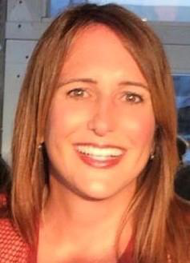Working with an editor is one of the most important decisions you'll make when it comes to publishing a book. So how do you know when you're ready to send your draft to an editor? How do you choose the right editor? And when do you trust your own writing style over your editor's suggested revisions? Find out all the answers you need to understand the editing process.
How to Know When Your Draft is a Manuscript
Ernest Hemingway once offered, “The first draft of anything is sh!t.” In his posthumous 1984 memoir, With Hemingway: A Year in Key West and Cuba, Arnold Samuelson shares his experiences working as a deckhand on Hemingway’s fishing boat for ten months in 1934. During their sea-faring adventure, Hemingway offered Samuelson, then a nineteen-year-old struggling writer, the following advice:
"Don’t get discouraged because there’s a lot of mechanical work to writing. There is, and you can’t get out of it. I rewrote the first part of A Farewell to Arms at least fifty times. You’ve got to work it over…. When you first start to write you get all the kick and the reader gets none, but after you learn to work it’s your object to convey everything to the reader so that he remembers it not as a story he had read but something that happened to himself."
1. Pay Attention to Style
Generally speaking, once you’ve finished writing your first draft, it’s a good idea to put thought into your writing voice and your story’s structure. Though it is something you will hone, your voice should feel natural. In considering it, ask yourself, do I tell the story from a set point of view (POV)? In sticking to and serving your story’s point of view, edit within the same constructs of the voice and style you wrote.
2. Pay Attention to Structure
Next, think about structure. Think about your story’s plot and subplots. If you used an outline, did you follow it? Did you get your characters where you intended? Some writers coach that before you begin you should know where your story ends. I don’t prescribe to this. As I move beyond ideation to creation, I use an outline, but go where my characters take me. No matter what your approach is, before you consider your first draft a manuscript, make sure there aren’t any loose ends.
3. Self-Edit
While many writers do, I don’t write an entire first draft before I begin editing. I edit along the way. Writers have distinct voices, and they have their own way. So, while there aren’t any hard-fast rules, what follows is a solid start to building confidence that your first draft is ready for an agent, editor, or potential publisher.
Draft-to-Manuscript Checklist ✔️
- Reread your first draft. A cursory read helps pinpoint glaring issues with narrative flow and provides insight on POV.
- Take a step back. Take a week or two away from the book.
- Read your first draft aloud. Check the pace, and if something sounds awkward, finesse it until it sings. Pay special attention to dialogue. Do all of your characters sound alike? If they do, revise the way they speak until each is distinct.
- Sketch character arcs. Reevaluate your story’s major and minor characters’ goals and motivations.
- Use the “find” tool. Track down overused words and phrases. Check adverbs and gerunds too. Overusing gerunds often identifies an issue with tense. Adverbs should be used sparingly.
- Enlist beta readers. If you’re in a weekly or monthly writing group, by all means, ask them to read the book, and be willing to return the favor, or impose on a few opinionated friends.
- Sum up your story. Pen a short synopsis and a long one; if you’re beginning a search for an agent, put some thought into your query letter.
After you accomplish everything on this list, your manuscript will, undoubtedly, be different than its first incarnation. Your first draft might even embarrass you. That’s okay. In her book, Bird by Bird: Some Instructions on Writing and Life, Anne Lamott, mollifies us. She writes, “You’re allowed to produce crappy first drafts because no one will see it, but you.”
The Evolution of Book Editing for Indie Authors
Successfully publishing a book isn’t as easy as an author writing something, having it proofread, and then printing it.
There’s a marked difference between what traditional publishers bring to the editing table and what an indie author might not even know to consider. Even before a manuscript gets to a publisher, it’s conceivable that it’s been reviewed by a literary agent and an acquisitions editor. Add to these stop-gaps that big publishers have distinct departments that accomplish different types of edits to finesse a book before it’s published.
Over the years, I’ve educated authors on “best” publishing practices, and, as best I could, mimicked The Chicago Manual of Style’s publishing process to include manuscript preparation, editing, proofreading, and then later, as I learned of their importance, helping authors format and create book metadata.
It’s been my experience that even when indie authors consider the best book editing practices, they don’t necessarily have the budget or time to tackle all the rounds their manuscript needs.
Articulating old-school book editing terms has become murky. We’ve blurred a few steps in what was once a standard process. Editors began using the term “collaborative editing” to convey that editing is, indeed, a joint effort.
I would add that, as it stands, an editor serving an indie book also fuses different levels of book editing into a single “round” or two of editing. For better or worse, line editing, copyediting and, yes, even proofreading are often lumped together to mean the same thing. While most authors understand there is, in theory, a distinction, the author wants to get as much editorial bang for their buck.
Very recently, I’ve begun to concern myself less with specific, industry-standard editing definitions to help authors better navigate an industry with drastically changing standard operating procedures.
Working with an Editor
If I were to describe my editing goal it would be: editor seeks author for long-term relationship. I’ve worked with writers on second, third, and even fourth books. And, while I like to think I am generous and accommodating, not every author responds to my editing style and that's okay.
How to Pick the Right Book Editor
I can be a tough cookie, and I don't always assuage authors’ egos. I value time and prefer to quickly get to the point. This can be unsettling, especially for first-time authors. I’m also not monogamous. I stagger pub-date deadlines and juggle a few projects at a time.
With this being said, the first thing you should do when hiring a book editor is to make sure that you and the editor are a good fit. My editing style may sound like a dream to some and a nightmare to others, and the working relationship you have with your book editor needs to be one built on a foundation of trust.
Understand What's Acceptable
Over the course of a project, which is anywhere between six weeks and six months, things come up. The art of writing is as subjective as the science of book editing. Think about it. Some days you knock out 5,000 words; the next morning you struggle to string five sentences together.
Book editing is far from a perfect science. Sure, most of it comes down to mechanics and style, but there’s a level of error, interpretation—and, sadly, interruption.
Publishing emergencies come up. This spring, with a closing-in pub date, a former client asked me to review revisions she’d made to her novel, pushing projects with later deadlines aside. And too it happens that some projects—ones that initially seem straightforward—hit a literary wall, be it tense going wonky or a subplot going sideways, and an editor must reread/reevaluate/rethink earlier passages of the narrative. It happens, and takes time, but a good book editor won’t rush. That isn’t how book editing works.
Communicate
Throughout my career, whether or not a client responds to the constructive criticism demanded of me as an editor, clients always respond to my being able to communicate with them during the process about the process and, when kinks come up, that I give them a heads up. Sometimes this isn’t anything more than reaching out with an email to touch base.
For first-time authors, the book editing process is a new experience, so it's beneficial if you're willing to learn and trust your editor and whatever his or her process is. There's always a reason an expert is an expert. If you don't trust their experience, they probably aren't the best fit for you. That said, don’t be afraid to ask questions. Even if the when gets tricky, your editor should explain the how, why, and what.

Breaking Up with an Editor
Unfortunately, not all author-editor relationships will work out. What follows is a list that will help if you find yourself at the point where you'd like to break up with your book editor.
Continue to be clear about your expectations.
If you find that it's not working out with your current book editor, make a clean break, and don’t waste time. If you’re the editor, make a referral, and, if you’re the author, ask for one.
Authors, make sure you have your files, and, editors, make sure you offer them.
Set up an exit interview. This doesn’t have to be more than a ten-minute phone call to assess what the manuscript needs moving forward and to wish one another well.
When it comes to a refund or partial refund, be fair. When editing projects go sideways, both parties lose time and the project loses momentum.
Breaking up is hard to do. Feelings get hurt. Egos get bruised. Whether you’re the storyteller who brought it into the world or the editor who tried to help it along, the important thing to remember is what really matters: the book.
Trusting Your Writer Intuition
I recently performed an editorial review on a book that came to me through IngramSpark, and when the author, Dave, decided to move forward with editing services, I cherry-picked it. Our schedule was tight, and a week or so later, I recommended 2,523 total edits and offered 78 comments . . . only some of which he decided to accept.
He made his revisions and returned his manuscript with the following missive:
Ellie,
I have attached the draft with most of the comments intact. In the interest of having little desire to conform to the accepted rules of good writing practices, I’ve decided to change a couple things back to the way I had them.
I hope we get a chance to talk again. I enjoy our conversations.
Thank you,
Dave
Keep in mind Pressque edits all sorts of books with all sorts of needs, and Dave is an able writer and his manuscript didn’t need what we call “heavy lifting.” The narrative needed stronger transitions, a few commas, strategic paragraph breaks, and, in some instances, for him to make stronger word choices. In other words, it merely needed finessing.
In my initial appraisal, I referred to this level of book editing as a “spit shine,” and while there’s no doubt I had a hand in ironing out glitches, what strikes me is Dave's candid resolve to “change a couple things back to the way I had them.”
His writer intuition was right.
It’s clear he knows punctuation and grammar, yet, he chose his personal writing style, and his book is better off for it. Our experience went like this: he wrote; I made suggestions; he revised; I made suggestions; he revised. When I prompted him with the adage, “You can lead a horse to water, but you can’t make him drink,” to describe his writing quirks, he countered, “You can lead a horse to water, but you can’t make him wear swim trunks.” 
While it’s an editor’s job to question, belabor, and poke holes in content, during the editing and revision process, authors should follow their writer intuition. A slew of great, gutsy authors buck convention. Cormac McCarthy once told Oprah that “…if you write properly, you shouldn't have to punctuate.”
Sure, writers should understand their mother tongue—as well as its canons and tenets, but what makes a good book unforgettable often comes down to writing style. A writer should know rules before rules are bent or broken, because if what’s offered wasn’t intended, then there’s little chance the writing will come off as authentic—and it sure as heck isn’t style.
How we communicate with language, especially in long narrative form, is subjective and personal, and what makes good writing doesn’t solely or necessarily hinge on punctuation. As someone who loves reading, writing and editing, I’ve come to realize magic happens when someone makes what they’ve offered seem effortless.
Look at it this way, there’s always an element of instinct in good writing—what word to use, how to balance dialogue and narration, even how to vary sentence structure so everything doesn’t sound the same. It’s almost musical. A worthwhile editor gets this and wants to take a journey that not only addresses the grammatical technicalities of a manuscript in the book editing stage but also gets into this territory of instinct to help authors celebrate and hone their own natural writing style and hone it into really good writing.














